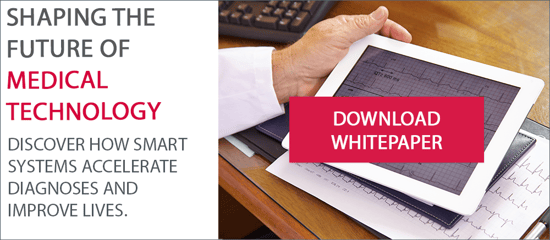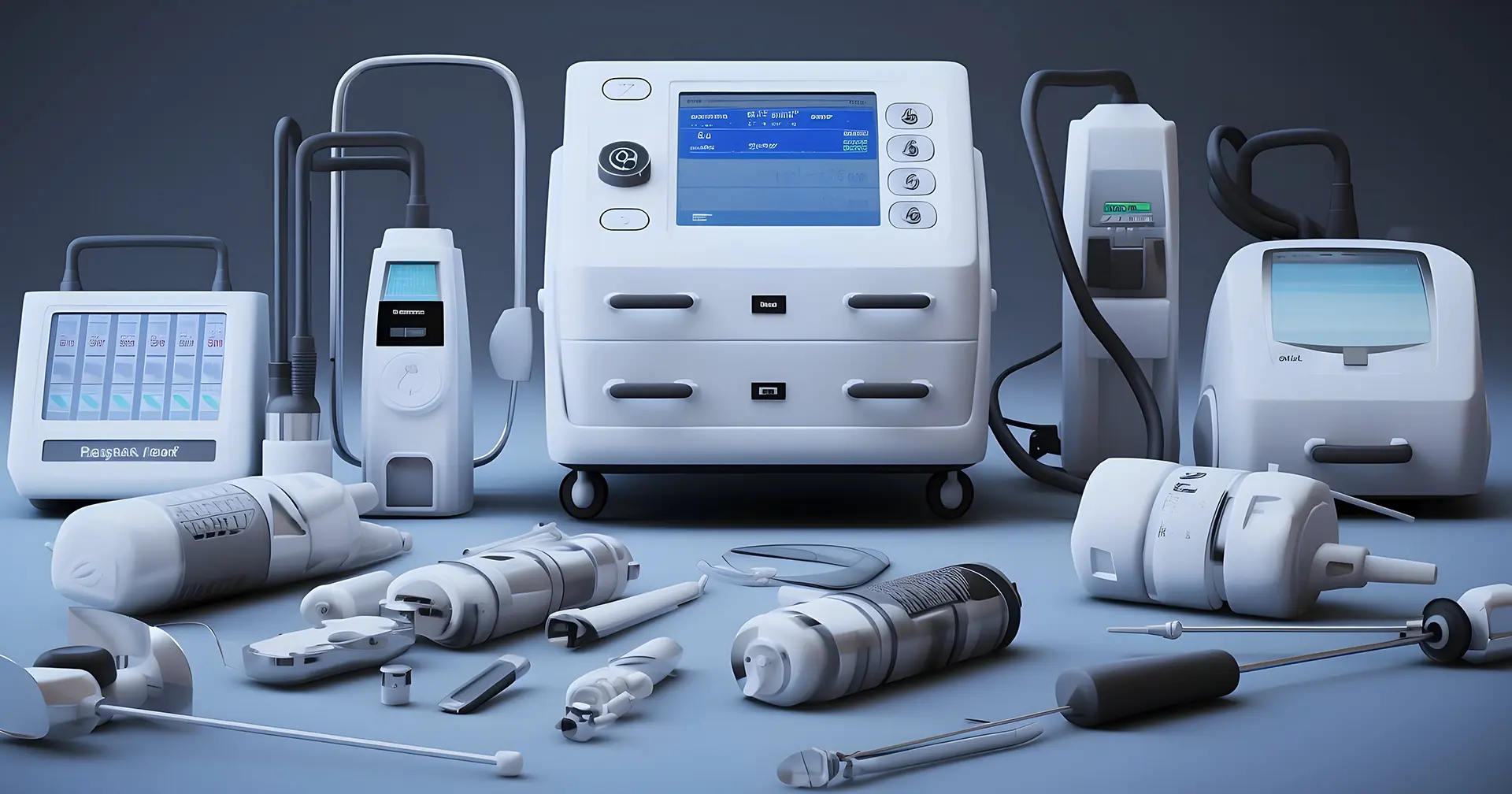Cardiovascular disease is the number one cause of death worldwide. Better early detection and adequate care in this area could therefore lead to significant progress in extending life expectancy and improving quality of life. This would also significantly reduce the burden on the healthcare system. The example of a smart ECG device shows how digitalization can make such successes possible – but also what hurdles need to be overcome during development.Various diseases of the cardiovascular system, collectively referred to as cardiovascular diseases, are among the most common causes of death worldwide. Heart attacks and strokes account for 85 percent of such deaths. Early detection and treatment could save lives – but many of those affected are unable to interpret their symptoms.
This is partly due to inadequate medical care and corresponding early detection programs. Studies show that up to 70 percent of serious cardiac arrhythmias go undetected in everyday life because they occur only sporadically and not when an ECG is performed.
A so-called long-term ECG, which records heart activity over several days, can help here. But what if disturbances do occur and immediate action is required to prevent more serious damage to health? With standard devices, this would only be discovered when the doctor evaluates the stored data – and thus possibly far too late.
Social dimensions
A closer look at the German healthcare system reveals that the costs and benefits are not in balance. It is one of the most expensive in the world, but does not deliver better results in terms of life expectancy. Prof. Michael Hallek, Chairman of the German Federal Government's Health Expert Council, therefore criticizes: "We are burning through an incredible amount of money." As a result, professionals are overworked and patients often do not receive optimal care.
The Advisory Council has also identified the digital transformation of the healthcare system as an essential element in improving the situation. It could contribute to significantly improving efficiency in medical practice. In concrete terms, this means, among other things, minimizing manual processes and bureaucratic requirements with the help of a higher degree of automation. This relieves the burden on medical staff and counteracts the shortage of skilled workers. For patients, waiting times and unnecessary duplicate examinations by different departments are reduced – the quality of care increases.
This creates more capacity in the outpatient sector and thus counteracts the trend toward performing more and more treatments on an inpatient basis simply because there is a lack of outpatient alternatives. This enables cost savings in several areas, while also improving the quality of patient care and reducing the burden on medical staff.
Digitalization in practice
Experts and commissions have long been calling for faster digitization of the German healthcare system. The example of a smart, networked ECG device illustrates the key elements of this development and the practical added value it can deliver.
The first step is to record the electrical stimuli in the heart using the device's sensors – just like with a conventional ECG device. However, unlike a conventional ECG device, the "smart ECG device" performs post-processing of the measured values in the integrated microcontroller. This allows initial anomaly detection to be carried out on the device itself. For the time being, this is only possible to a limited extent due to restricted computing capacities and, in the case of mobile devices, scarce energy resources.
More detailed, accurate evaluation can take place in the cloud, also automatically. This requires real-time networking that ensures secure, GDPR-compliant data transmission. More extensive data storage and analysis are possible in the cloud. The results are then passed on to middleware, which checks the data quality and validates the data formats. On this basis, it can serve as a trusted data source for other systems and trigger automated processes.
In the case of acute symptoms, for example, the emergency services can be alerted immediately, as time is of the essence in the event of a heart attack. Or it enables the data to be visualized for hospital staff, care facilities, relatives, or patients themselves. Last but not least, the data is also available for other diagnostic and therapeutic applications, as well as for other networked systems. This means that , for example, decisions can be made about which therapeutic steps are necessary next and appointments with specialists can be made immediately.

Fig. 1: The digital ECG device from a system perspective: Special skills are required in development for each layer.
Complex developments required
The diagram shows that a whole series of prerequisites must be met in order to implement the processes described. Networking and interoperability, ideally with open, manufacturer-independent interfaces and data formats, form the basis. Safety and cybersecurity, data protection, and electromagnetic compatibility are the most important constraints in everyday clinical practice for deriving the technical requirements for the device.
Added to this is the use of artificial intelligence (AI) and machine learning (ML), partly in the device and partly in the cloud, as well as the use of software in the form of cloud applications, middleware, and applications on PCs or smartphones. Under these conditions, the multitude of devices and applications gives rise to a comprehensive medical ecosystem—an Internet of Medical Things (IoMT).
User acceptance—among both medical staff and patients—must also be taken into account. This requires a particular focus on usability and the design of user interfaces (user experience, UX, and user interface, UI). Last but not least, market approval requires consideration of special features for medical devices, which are specified in the EU Medical Device Regulation (MDR) or in the US Food & Drug Administration (FDA) regulations.
EDAG offers external support
Reconciling all these requirements across the various application layers from chip to cloud poses an enormous challenge for manufacturers of medical devices. Refusing to embrace digitalization and networking is not an option – because development is unstoppable, and those who fail to keep up will not only lose competitiveness but also reduce the quality of life of patients.
In order to accelerate the complex, extensive development processes and equip themselves with the necessary skills in the various areas and levels, manufacturers often rely on cooperation with external partners. This requires service providers who cover a broad field of expertise and can thus efficiently solve the tasks at hand.
This is where EDAG can score points as a broad-based service provider with extensive experience and areas of expertise:
• Programming of embedded software;
• Development of AI algorithms;
• Chip-to-cloud architecture;
• System integration & interoperability;
• Cybersecurity & data protection;
• Testing & validation;
• Approval support;
• Change management.
The respective specialists can contribute their expertise to the individual development tasks on the one hand and coordinate the boundary conditions with the experts from the other development strands via short official channels on the other. Close cooperation under one roof helps to ensure that development processes can be carried out quickly and efficiently.
As a manufacturer of medical devices, are you also facing the challenge of creating smart, connected solutions that fit seamlessly into the medical ecosystem of the future and enjoy high acceptance among users? Then talk to Sinem Atilgan, Specialist Consultant for Digital Transformation, Tobias Schunk, Project Manager Software & Digitalization, or Michael Kelnberger, Sales Manager Technical Sales at EDAG. We will cover more on the topic of approvals and the need for CAE recertification in our next white paper. And download our white paper "More digitalization promotes cardiovascular health" right here, which uses the development of a digital ECG device to show you how to invest in future-proof development.






